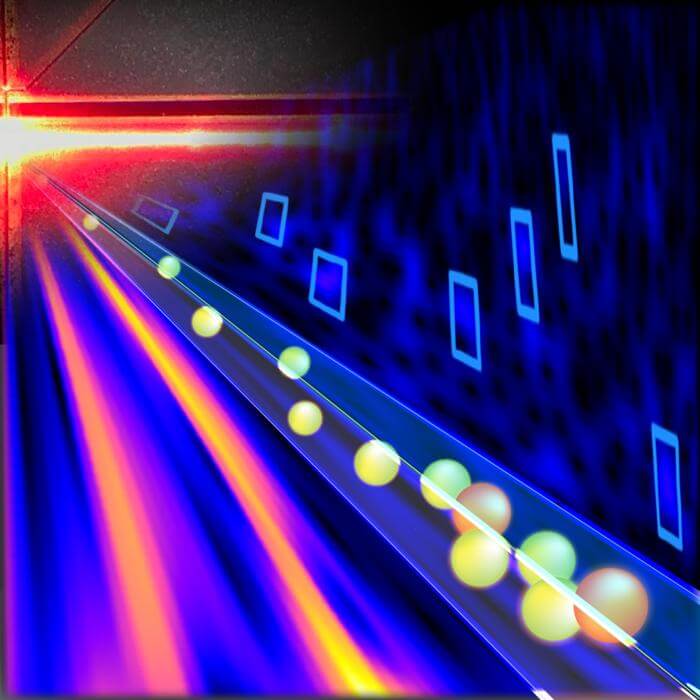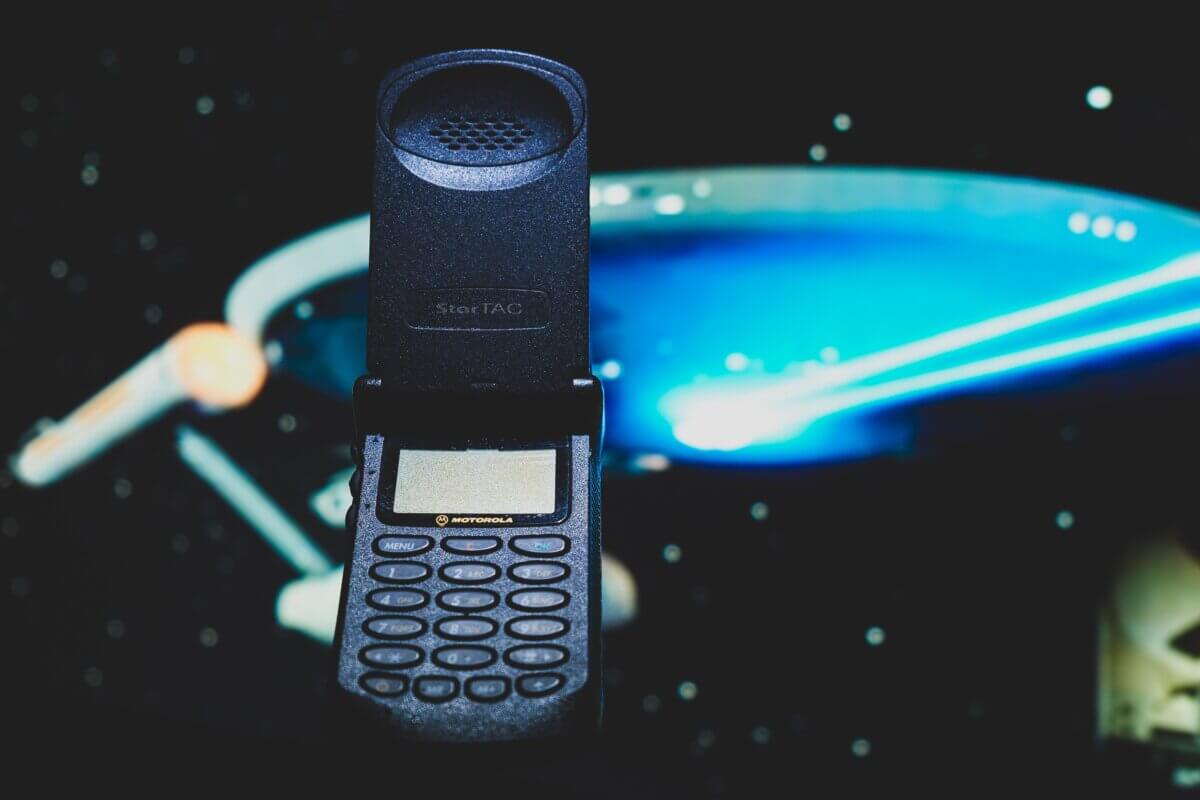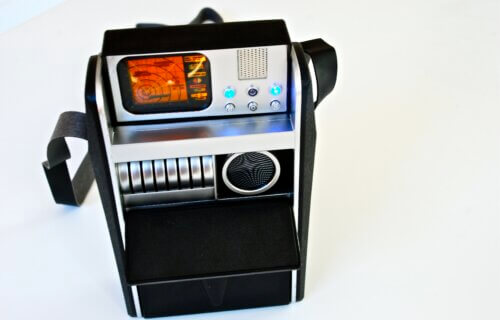WASHINGTON — Science fiction is about to become reality. Scientists have developed a cutting-edge device capable of performing multiple medical tests at the same time. This laser biosensor, reminiscent of the Starfleet tricorder from “Star Trek,” can analyze diverse particles simultaneously, including viruses and DNA.
The portable, high-tech device can identify the faintest traces of a specific virus, antibody, or protein marker for certain cancers in a blood sample. It may even be able to detect airborne chemical warfare agents at levels far below toxicity. In experiments, the device successfully detected a mix of nanobeads across eight orders of magnitude, expanding potential concentration levels by more than 10,000 times.
“This work is our latest step in developing integrated optofluidic sensing devices that are sensitive enough to detect single biomolecules and work over a very wide range of concentrations,” says Dr. Holger Schmidt from the University of California-Santa Cruz, the project’s lead author, in a media release. “We have shown that this can be done with a single method, which allows us to simultaneously measure and distinguish multiple particle types at once even if they have very different concentrations.”
Scroll down to see 8 other modern inventions inspired by Star Trek

Many chip-based testing devices focus on one target, given that biomolecules come in different forms and vastly varying amounts. However, the team’s platform, which integrates optics and microfluidic channels on a silicon or plastic chip, can be used for multiple targets. It identifies particles by shining a laser beam on them and measuring the response with a light-sensitive detector, allowing the identification of nucleic acids, proteins, viruses, bacteria, and cancer biomarkers.
Previously, separate detectors and signal analysis techniques were used to measure particles with high and low concentrations. This was essential because a high concentration of one type of particle can create a large response, overshadowing the much smaller signals from another particle type present at low concentrations.
“Secondly, we implemented a feedback loop that detects when signals are really large and adjusts the input laser power accordingly. In this way, we can detect large signals from high concentrations without overwhelming the weak signals that may be present from another species at low concentrations,” Dr. Schmidt further explains.

The team also applied a rapid algorithm to identify single particle signals at low concentrations and used machine learning to recognize signal patterns, which enabled them to distinguish different particle types with high accuracy.
The researchers demonstrated their new approach by using optofluidic biosensor chips with a solution of nanobeads at different concentrations and various fluorescence colors. They successfully identified the concentration of both yellow-green and crimson beads, even though their concentrations in the mixture differed by more than 10,000 times.
“While this work advances a specific integrated sensor that is based on optical fluorescence signals, the signal analysis technique can be used with any type of time-dependent signal that covers a wide concentration range. This can include different optical signals but also electrical sensors,” adds Dr. Schmidt.
Medical device company Fluxus Inc. is currently commercializing the team’s optofluidic biosensing technology. Additionally, the researchers are working to adapt their methods to study molecular products from artificial neuronal cell tissue organoids. This could potentially provide further insight into neurodegenerative diseases such as Alzheimer’s and pediatric cancers.
The study is published in the journal Optica.
8 technological breakthroughs you first saw on Star Trek
Just like this new multi-purpose sensor works just like Mr. Spock’s tricorder from 1966, there have been several scientific inventions which owe their existence to the ideas dreamt up on “Star Trek” over the last 57 years. Here are some of the technologies and inventions that one can argue took their inspiration from the sci-fi classic:
- Cell Phones: In “Star Trek,” characters have been using hand-held communicators to talk to each other across long distances since 1966. These were similar to modern flip phones. According to Martin Cooper, the inventor of the mobile phone, the show was an inspiration for his invention.

- Tablets and PADDs: The Personal Access Display Device (PADD) used in “Star Trek” is an uncanny precursor to today’s tablet computers. Its functionality and design inspired the iPad and other tablet devices.
- Voice-Activated Computers: The USS Enterprise’s computer, which responds to voice commands, is similar to today’s AI voice assistants like Amazon’s Alexa, Google Assistant, or Apple’s Siri.
- Teleconferencing: In “Star Trek,” characters often use screens for real-time communication with others, even across vast distances. This is quite similar to modern video conferencing technologies like Zoom, Skype, or Microsoft Teams.
- Universal Translators: Did you ever notice that every alien on “Star Trek” speaks English? The show’s universal translator, a device capable of instantaneously translating what aliens are saying, has found real-world parallels in software like Google Translate, and various translation apps that utilize AI for instant translation.
- 3D Printers (Replicators): Replicators on “Star Trek” could create objects seemingly out of thin air. While we’re not quite there yet, 3D printers are a step towards this, allowing us to create 3D objects from digital designs. Other scientists are also working on devices that harness energy from thin air to make fuel.
- Virtual Reality: The holodeck on “Star Trek” provides a fully immersive, interactive virtual reality environment. This has been a major inspiration for the development of virtual reality and augmented reality technologies.
- Tasers and Phasers: While not identical, the concept of a Phaser, a non-lethal weapon for incapacitating enemies, in “Star Trek” has similarities with the development of Taser guns.
While it’s important to note that not all these technologies are direct results of “Star Trek,” the series certainly popularized these ideas and helped to inspire their real-world counterparts.
South West News Service writer Mark Waghorn contributed to this report.


Actually a medical tricorder would have been carried by medical doctor. The one that Spock did carry was for other science related issues.
It would be like Dr. McCoy’s medical tricorder, or one of his handheld scanners.